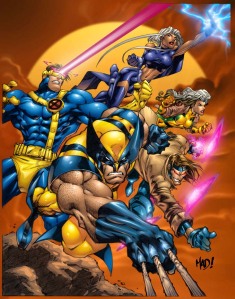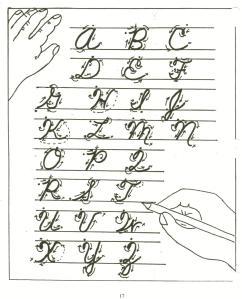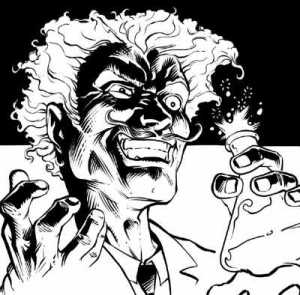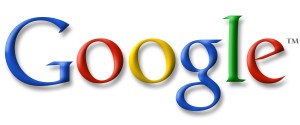Last week I started both of my grade 9 science classes on their very first inquiry project. Titled “Mutant Nation,” it is a project that I have discussed on this blog before. The basic premise of Mutant Nation is as follows:
“The year is 2030. Designer mutations have changed the face of humanity. A new company, Genetically You, is offering people the chance to buy customizable genetic mutations. As an employee of this company, it will be your job to design a brand new mutation and accompanying marketing campaign.”
When I originally designed this project, it was aimed at a Biology 30 class where there is a deeper focus on genetics and the students could really get into the nitty gritty of DNA. This being a grade 9 science class, it had to be toned down quite significantly. As stated by the program of studies, genetics is only cursorily addressed, thus limiting students to the very basic facts about DNA.
Over the course of this year, I’ve found that my students handle work better when it is divided up into smaller pieces that can later be tied together to form a finished product. So I broke it down and split it into five “tasks,” and each one is handed in before the next task begins.
- Design a Mutation
- The DNA Effect
- The Public Domain
- The Marketing Campaign
- The Bioethics Committee
In Design a Mutation, students are introduced to the project and have a chance to brainstorm ideas about what they’d like to do. I found that by presenting the project in a fashion that mirrors The X-Men, students were more receptive to the overall concept. To get them started, I referenced the “X-Factor,” or the mutation found in all X-Men which give them their powers. Though it is only a single mutation, it is one that affects their entire physiology. However, in giving students the choice over what their mutation could be, the are quick to make choices that will present difficulty later on in the project. Each chosen mutation had to be approved before the students could continue. My criteria for approval was essentially that all mutations had to be physiological, keeping away from things like telepathy and telekinesis.
In The DNA Effect, students outline how their mutation will affect the customer. The goal of this task is to examine the primary function of the mutation (aesthetic vs functional), and how it will affect the physiology of the customer.
For the third task, The Public Domain, students have a chance to look at the wider-range of implications their mutation may have on the human population. As these mutations will all become part of the customer’s DNA, they must consider how it will affect the children and grandchildren. They must also consider what effect this will have on the human population as a whole.
The fourth task, The Marketing Campaign, is less question-based and more hands-on. Here students have a chance to actually design their marketing campaign and how their product will be sold to the public. It is at this stage that they can employ various technologies such as Xtranormal or iMovie for videos, word processors for print ads, or iWeb for websites. Though it varies from medium-to-medium, I encourage all students to be as creative as possible and use their knowledge of commercials and ads to come up with something that they would see as alluring.
In the final task, The Bioethics Committee, students examine the ethical considerations associated with altering the DNA of their customers. Topics like the FDA and genetically modified organisms (GMOs) would be excellent discussion starters. Furthermore, links to social studies can easily be made by referencing any eugenics programs that have occurred in the past. The most notable of these being the Aryans and the underlying meanings of an “aryan race.” It would not be unexpected for some students to stop at this point and say that their mutation is probably not something that should be sold to the public because it might be dangerous or harmful.
Despite all the work that will have gone into the project by this point, the process is intended to mirror the actual steps required for a product to be approved for sale to the public, and therefore a select few students may recognize that their product should not be sold to the public. In many cases, this would be the desired outcome because so many of the mutations will likely be so incredibly outrageous that to introduce them into the collective human genome would be disastrous for the species as a whole. However, this is unlikely given that many of the students will believe their mutations to be “cool” and thus the obvious choice for introduction to the public.
I have yet to implement the 3rd task for both classes, but I intend to keep posting as the project progresses as a method for reflection. At this point all I can say is that the project appears to be succeeding, but I won’t know for sure until closer to the end.
/bow








Education Misconceptions
May 23, 2010 in Teaching | Tags: Comments, Salary, Teachers | 2 comments
I’m back! I know I’ve been away for a little while, just needed some time to recharge, go on vacation and take a break from writing. And boy oh boy, did I ever find a juicy bit of web linking for you. CBC uploaded this article today on the topic of salary increases for teachers in Alberta.
The content of the article isn’t really what I want to cover in this post, but rather the comments that followed the article. Yes, the topic of salaries is a sticky one with a lot of people, teachers and other professionals alike. But it’s what people perceive our professional lives to be that interests me. If you’ve never read the comments that follow a CBC article, I highly recommend you do, they can be hiding treasures that will make your day. (Though I find myself sometimes wondering if allowing comments is a good thing, given how many quick-to-judge, uneducated comments there are…)
Read more